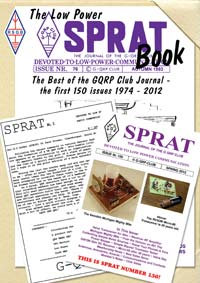Way back in my early professional life I was responsible for the design and implementation of a tiny 70cm antenna that had to fit inside the
Pye PF8 UHF handportable transceiver. The mechanical design team had left virtually no space for the plate antenna we had intended, so yours truly had to come up with a solution that both fitted and worked efficiently. I managed it by changing the plate antenna to a skeleton plate antenna. In the end it worked very well but the tuning was VERY sharp. Reference here should be made the Wheeler and the
Chu limit that defines the bandwidth that an efficient electrically short antenna can achieve.
Basically the thing to remember is this: the smaller the antenna is the higher the Q, and the narrower the bandwidth is, for efficient operation. This is why magnetic loops can work well if designed with a very very high unloaded Q and why they have a very narrow bandwidth if working efficiently. It also explains why a short loaded antenna will have a narrower bandwidth if working efficiently. Dr Underhill has argued that a small magnetic loop actually violates the Chu limit.
There is a good analysis of small antennas at
http://www.m0rzf.talktalk.net/RobCentral/E.S.Antenna.html which goes into some of the maths and looks at various electrically small antennas. Some are "snake oil" of course, but some well designed ones
do work with the caveat of narrow bandwidth e.g. well designed magnetic loops.
What is the interest in all this for me today? Well, I am still thinking about HF operation at the new QTH and how to meet my goals of a small, low visual impact antenna, that works well. One thing in my favour is I tend to operate on quite small parts of the HF bands e.g. around the WSPR/PSK frequencies or around the QRP frequencies. As long as I am prepared to stay close to certain frequencies like 28.1246MHz I should be able to design a very small efficient antenna. I already know that a magentic loop antenna works very well indeed and would certainly meet my goals.












